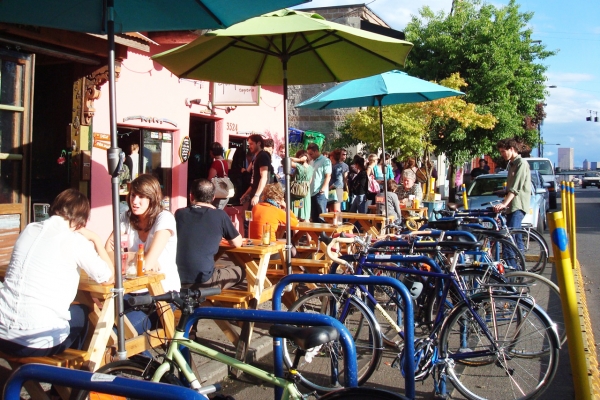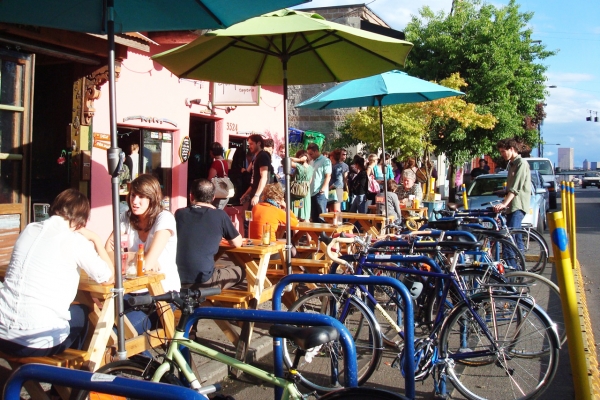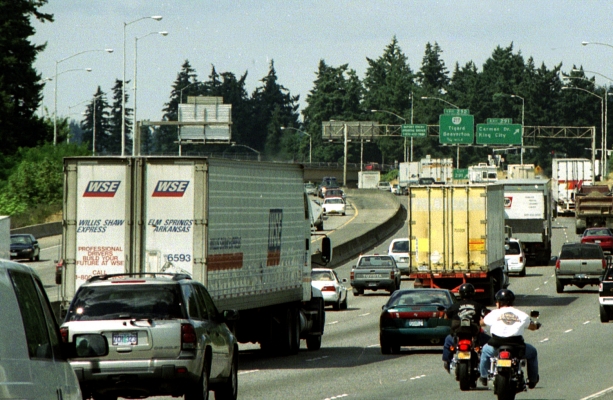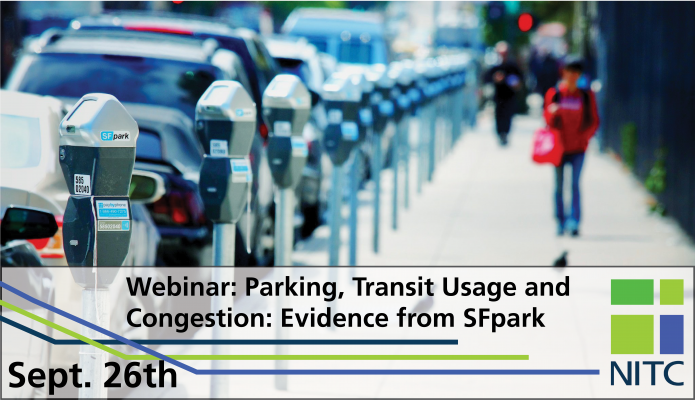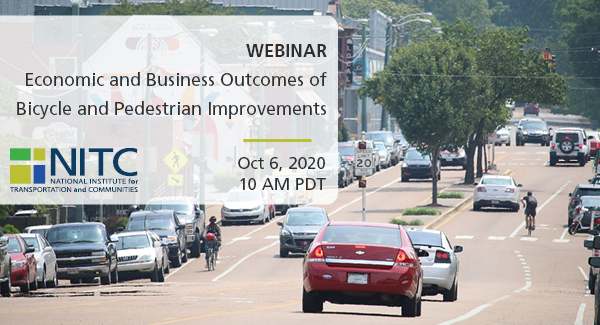Bicycle commuters represent a significant chunk of business consumers in Portland, Ore., one of America's most bike-friendly cities. OTREC research in the past year has provided data on how cyclists and other mode users patronize local businesses.
With various governments encouraging people to drive less, economists have wondered if such goals can have the side effect of harming the economy. In most cases, the answer is no, OTREC researcher B. Starr McMullen concluded in a research report.
- Click here to read more about the research and to download the report.
It’s more than an academic question: driving and the economy do tend to rise and fall together. McMullen, a transportation economics professor at Oregon State University, examined the relationship between the two by looking at which happens first—a change in driving or a change in economic activity.
In general, economic growth leads to more driving, not the other way around, McMullen said. That’s particularly true for metropolitan areas, the very places most likely to pursue policies that reduce driving.
“The more economic activity you have, the more VMT [vehicle miles traveled] you’re going to have,” McMullen said.
On the other hand, if there are policies to reduce VMT and driving decreases, “you’re not going to have the economy fall apart," as some have suggested.
If a state sets a goal to reduce VMT or transportation...
Read moreView slides
Watch video:
The City of Portland is exploring how distributed “Internet of Things” (IoT) sensor systems can be used to improve the available data that is usable by city engineers, planners, and the public to help inform transportation operations, enable assessments of public health and equity, advance Portland’s Climate Action Plan goals, and...
Read moreView slides
Watch video:
As many cities are investing in street improvements to provide better biking and walking experiences, the economic value and impacts of these active transportation facilities remain areas where many practitioners, planners and policy makers are seeking more conclusive evidence. With various modes competing for scarce resources, planners and transportation agencies often...
Read moreWEBINAR SLIDES
Missed the presentation or want to look back at the slides? View the slides here.
WEBINAR VIDEO
WEBINAR SUMMARY
Parking is a serious issue in many urban areas, especially those experiencing rapid population growth. To address this problem, some cities have implemented demand-responsive pricing...
ITS Lab (Engineeering 315)
Abstract: Despite the never-ending cascade of depressing economic developments recently, there are some encouraging new trends to be discovered. Some of these trends relate to the vehicles we buy and how we drive them, and the consequences of these actions. In this presentation, I will discuss several new findings about the positive influences of the recent economic changes on (1) the fuel efficiency of purchased new vehicles, (2) the amount and type of driving that we do, (3) how much carbon dioxide emissions we produce from driving, and (4) the number of road fatalities.
Bio: Dr. Michael Sivak is a Research Professor and the Head of the Human Factors Division of the University of Michigan Transportation Research Institute (UMTRI). He received his Ph.D. in Experimental Psychology from the University of Michigan. Dr. Sivak's primary expertise is in perceptual and cognitive aspects of driving. Examples of his recent research topics include human-factors aspects of vehicle design, bounded rationality and driver behavior, and the relative risks of flying and driving. In 2001, he was named a Distinguished Research Scientist by the University of Michigan. In 2006, he received the A.R. Lauer Award from the Human Factors and Ergonomics Society for outstanding contributions to human aspects of the broad area of safety.
PRESENTATION ARCHIVE
OVERVIEW
The National Street Improvements Study, conducted by PSU in conjunction with PeopleForBikes and consulting firm Bennett Midland, researched the economic effects of bicycle infrastructure on 14 corridors across six cities — Portland, Seattle, San Francisco, Memphis, Minneapolis and Indianapolis. The study found that improvements such as bicycle and pedestrian infrastructure had either positive or non-significant impacts on the local economy as measured through sales and employment. In this webinar, lead researcher Jenny Liu will share the results of the investigation and the unique methodology for investigating these economic outcomes.
THE RESEARCH
This webinar is based on a study funded by the National Institute for Transportation and Communities (NITC) and the Summit Foundation, and conducted at Portland State University. Read more about the research: ...
Read more
